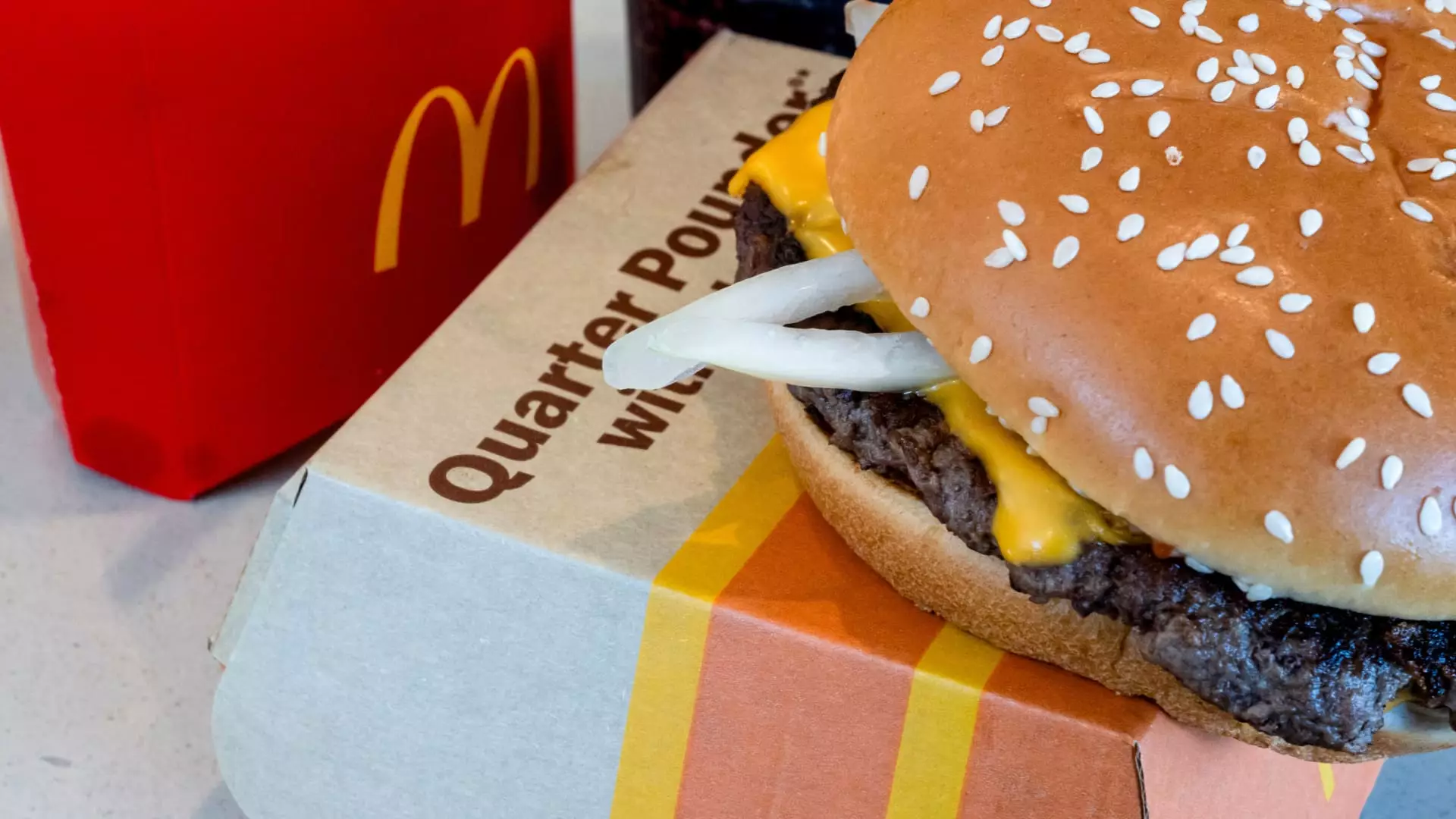The recent outbreak of E. coli associated with McDonald’s Quarter Pounders has raised significant alarm within the public health sector, leading to a total of 75 confirmed cases across 13 states, according to the Centers for Disease Control and Prevention (CDC). With serious implications for consumer safety and the fast-food giant’s reputation, this incident demands careful examination of its causes, responses, and potential ramifications for the business going forward.
The Centers for Disease Control and Prevention reported that 22 individuals have been hospitalized out of 61 patients for whom data is available. Alarmingly, one death of an older adult in Colorado has already been linked to the outbreak, demonstrating the outbreak’s severity. Among those infected, the ages range from 13 to 88, highlighting that the bacteria pose threats to a broad demographic. Additionally, two patients have developed hemolytic uremic syndrome, a complication resulting from severe E. coli infections that can lead to kidney failure.
Public health experts caution that the actual number of E. coli cases is likely much higher than reported. Many individuals experience mild symptoms and do not seek medical attention, thus leaving the CDC with an incomplete understanding of the outbreak’s true scale. This highlights a significant gap in monitoring public health and indicates that the situation could extend beyond the states currently identified as affected.
McDonald’s stands at a crossroads as it navigates the fallout of this outbreak. Initial reports revealed that 42 interviewed patients had consumed food at McDonald’s, predominantly the Quarter Pounder, sparking questions about the restaurant’s food safety standards. Although the company declined to provide additional comments beyond their initial statement, the urgency of addressing consumer concerns is palpable.
To mitigate the risks associated with the outbreak, McDonald’s has halted the use of slivered onions from affected regions and paused distribution of this ingredient altogether. The protocol prompted by this health crisis underscores the importance of rapid, transparent action in food safety management, and reflects a broader corporate responsibility towards public health.
The identification of Taylor Farms, a California-based agricultural supplier, as the source of the potentially contaminated slivered onions has further complicated the narrative. Taylor Farms has since initiated a recall of four onion products, complicating the supply chain dynamics not only for McDonald’s but also for other fast food chains, including Burger King and Taco Bell, which have also removed potentially tainted onions from their offerings.
The outbreak has evidently shaken McDonald’s stock prices, with shares falling 2% after the update and reflecting a more considerable 6% decline since the outbreak commenced. As the company braces for its third-quarter earnings report, investors are keen to know how these developments will influence consumer traffic and overall sales trends. While the company is attempting to affirm the safety of its menu items, the outbreak comes at a critical time when sales have already seen sluggish growth as price-sensitive consumers opt for value-oriented meal options.
Analysts predict only a modest growth of 0.5% in same-store sales for the third quarter, which raises the stakes for McDonald’s as it grapples with maintaining customer trust amidst a health crisis. The juxtaposition of a potentially damaging health scare against sluggish sales growth provides an unsettling backdrop for the company’s financial performance.
As the CDC and other federal agencies continue to investigate the outbreak and its origins, McDonald’s faces a crucial challenge: to restore consumer confidence while ensuring food safety. The company has implemented measures to reassure customers that its items are safe, but experts warn that the damage to its brand could be long-lasting, similar to past incidents with E. coli in other fast-food chains.
Moving forward, McDonald’s must prioritize not only rectifying the immediate implications of this outbreak but also reevaluating its food safety standards to prevent future occurrences. In an era where consumer awareness and health consciousness are on the rise, the resolution of this incident will be fundamental in shaping the fast-food giant’s reputation and profitability in the years to come. This episode serves as a stark reminder that even well-established brands must remain vigilant about food safety and public health implications as they work to balance profit and consumer trust.

